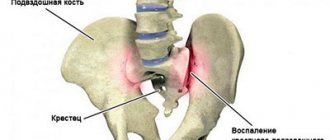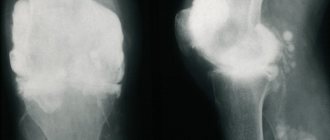Obstetrician-gynecologist, reproductive specialist, member of the Russian Association of Human Reproduction
Perevoznikova
Ekaterina Mikhailovna
11 years of experience
Obstetrician-gynecologist
Make an appointment Author of the article: Ekaterina Mikhailovna Perevoznikova, Obstetrician-gynecologist, reproductive specialist, member of the Russian Association of Human Reproduction
In medicine, infertility is the inability of an adult at reproductive age to reproduce. This factor negatively affects the social and psychological adaptation of people, affects health and quality of life.
Infertility – is it worth fighting?
If a married couple has not conceived after a year of regular sexual activity without the use of contraceptives, it is necessary to contact a specialist for examination. This fact in itself does not mean that one of the spouses is infertile; doctors in this case talk about a temporary inability to conceive a child. In most cases, this problem is successfully solved. For this purpose, modern fertility clinics have been created, which practice well-proven methods of treating infertility.
Doctors distinguish between relative and absolute infertility. The first type includes cases in which it is possible to identify and eliminate the causes of disorders in the patient’s body. Absolute infertility refers to irreversible physiological changes in the reproductive system (anomalies in the development of the pelvic organs, traumatic injuries, surgical removal of the gonads).
Infertility is also divided into primary and secondary. In case of primary infertility, there is no history of pregnancy at all, although regular sexual activity occurs without any means or methods of contraception. They speak of a secondary pregnancy if there has been at least one pregnancy (regardless of how it ended: childbirth, abortion, miscarriage, ectopic pregnancy).
Contrary to popular belief, infertility affects both women and men equally. That is, the quantitative ratio of infertile patients of each sex is approximately the same. The position when one partner places the blame on the other is absolutely wrong. Firstly, it creates strong psychological pressure, which only aggravates the situation. Secondly, a solution to the problem is possible only if the spouses have full mutual support. Thirdly, there are often precedents when treatment is necessary for both partners.
Age - after 35 years, the chances of conceiving decrease!
Nowadays, so-called “late births” have become popular, when the first child appears after 30 or even 35 years. However, at this age the possibility of getting pregnant is significantly reduced. The risk of having a baby with chromosomal abnormalities also increases. From a material point of view, it may not be bad that a woman gives birth when she is already mature. But nature has established the optimal age for the birth of the first child - 19-25 years. It is during this age period that strong, healthy children are most often born, and a woman quickly recovers after childbirth.
There are 3 reasons for age-related infertility:
- Decreased ovarian reserve
. At birth, a woman is given a certain number of eggs; when the reserve is exhausted, she becomes infertile. - High risk of recurrent miscarriages
. With age, toxins accumulate in the body, the immune system weakens, metabolism is disrupted, all this leads to disturbances in the formation of germ cells. Nature has laid down a program in which most of the embryos with abnormalities die in the very first stages and are born as miscarriages. The patient may not even know that heavy periods mean an early miscarriage. - Possibility of early menopause
. Every 10th woman experiences menopause before the age of 40.
Symptoms and causes of infertility
First, we need to make a reservation that, due to physiological differences, infertility is divided into male and female. Accordingly, the causes, diagnosis and treatment methods differ.
Female infertility is more multifaceted than male infertility. After all, a woman’s body must not only produce an egg, but also create conditions for conception and the normal course of pregnancy. Any, even minor, malfunction of the female reproductive organs can significantly complicate conception. Among the main causes and signs of infertility in women are:
- problems with ovulation;
- hormonal problems;
- ovarian dysfunction;
- damage to the fallopian tubes, adhesions;
- polycystic ovary syndrome;
- hormonal imbalance;
- scars on the lining of the ovaries;
- cervical erosion;
- early menopause;
- disorders in the cervical canal;
- defects in the development and structure of the uterus;
- psychological reasons;
- endometriosis;
- unruptured follicle syndrome.
Are you experiencing symptoms of infertility?
Only a doctor can accurately diagnose the disease. Don't delay your consultation - call
The most common causes include the following violations.
Obstruction or absence of fallopian tubes
It is in them that the meeting of the egg and sperm occurs, their fusion and the formation of an embryo, which then enters the uterus. Obstruction develops mainly due to the formation of adhesions (sticking together of the walls) of the pipes as a result of their inflammation. Rarely, adhesions can be caused by sterilization, in which the fallopian tubes are ligated or crossed. The absence of a tube may be due to its surgical removal, performed for vital indications (local purulent process, ectopic pregnancy).
Adhesions in the pelvic area
They occur after inflammatory processes, endometriosis, and surgical interventions. The adhesion can envelop the ovary or be localized between it and the tube, making it impossible for the egg to pass through.
Endometriosis
This is the name of a disease in which the mucous membrane of the uterus (endometrium) grows beyond its boundaries. Foci of growth are formed, and adhesions arise between them, interfering with the fertilization process.
Endocrine, also known as hormonal disorder
Endocrine disruption is observed in diseases of the ovaries, thyroid gland, pituitary gland, hypothalamus, adrenal glands, kidneys, and liver. It can be caused by metabolic disorders or severe mental stress or a shock situation.
Psychogenic infertility
Arises as a psychological reaction to not wanting pregnancy. A woman may consciously or unconsciously experience fear of childbirth or possible changes in appearance due to pregnancy. Sometimes the reason is the reluctance to conceive with this particular partner.
Immunological infertility
Occurs when there are antibodies to sperm in the female body, which interferes with the fertilization process. Under the influence of antibodies, sperm become inactive, making it difficult for them to pass through a woman’s body.
Reasons that interfere with conception or pregnancy
There are many reasons for infertility. Some are so primitive that if the spouse had known about them earlier, problems could have been avoided. Others may be so serious that the baby can only be delivered through IVF. It also happens that couples remain infertile even after treatment - the causes in this case cannot be eliminated.
According to statistics, most often the reason for non-occurrence of pregnancy lies in the female body, but it is still worth starting the examination with a man. This is due to the fact that first he needs to take only one test - a spermogram, while a woman will have to undergo different procedures.
Let's look at the main causes of female infertility.
Causes and signs of infertility in men
In men, infertility is manifested by one single symptom - the inability to conceive. Unlike women, symptoms of male infertility practically do not appear. This fact gave rise to the myth that men suffer from infertility much less often than women. The key factors causing infertility in men are:
- sperm deficiency (impaired sperm motility and viability);
- a sharp decrease in their number;
- complicated movement of sperm along the vas deferens and their release out.
- The causes of male infertility can be:
- varicocele;
- congenital abnormalities of the reproductive system (hypospadias, absence or obstruction of the vas deferens);
- isolated disturbances in seminal fluid;
- infectious and inflammatory diseases of the genitourinary system;
- surgical intervention (grooval hernia, hydrocele, bladder surgery, etc.);
- systemic diseases (liver cirrhosis, tuberculosis, diabetes, infectious mumps with complications of orchitis, chronic renal failure);
- sexual and ejaculatory disorders;
- psychogenic factors;
- necrozoospermia;
- obstructive azoospermia;
- endocrine (hormonal) disorders.
Additional reasons include: alcohol and nicotine abuse, exposure to radiation, and scrotal injury. Working in difficult and harmful professional conditions, for example, at too high or low temperatures, or in a toxic environment, has a negative impact on reproductive function. Separately, there are factors that can provoke a decrease in sperm count: stress, poor nutrition (lack of proteins and vitamins in the diet), chronic lack of sleep.
Classification of sperm pathologies
Regardless of what exactly caused infertility in a man, its mechanism can always be determined using a spermogram. The following sperm pathologies are distinguished:
- Azoospermia – sperm (ejaculate) does not contain sperm. It is divided into secretory and obstructive forms. In the secretory form, the testicles do not produce sperm; in the obstructive form, ejaculation is impaired due to obstruction of the vas deferens.
- Oligozoospermia – low number of sperm in the ejaculate (normally no less than 15 million/ml).
- Oligospermia – small sperm volume (norm – at least 1.5 ml).
- Anejaculation is the complete absence of sperm.
- Asthenozoospermia – sperm are not motile enough.
- Necrospermia - the ejaculate does not contain living sperm.
- Teratozoospermia is a disorder of the structure of sperm.
Infertility of unknown origin
Occurs in patients of both sexes. This is the name for a situation when, after a thorough diagnosis of the spouses, no causes of infertility are found. According to doctors, the couple is absolutely healthy, but conception does not occur. This diagnosis is explained by the fact that modern diagnostics are still not able to identify absolutely all the causes of pathology of the human reproductive system. Often, instead of an unclear genesis, another cause is mistakenly determined, and accordingly, measures to eliminate it do not bring the desired result.
Sometimes the cause of infertility of unknown origin is determined by the incompatibility of partners at the biological or immunological level. This is confirmed by situations where spouses were unable to conceive for many years, and after a divorce, each of them soon had children in new families.
Stressful conditions
In the life of any person there are plenty of situations when the body suffers from overwork, lack of sleep, nervous exhaustion. The only way out of this state is rest, but only proper, high-quality rest. If you neglect this, you can not only get infertility, but also a number of other health problems.
Sometimes it is impossible to relieve stress simply by resting, then you need to consult a doctor. It is important to understand that a stressful situation drives you into a vicious circle. Stress - hormonal surge - deterioration of the condition - even more stress and nervous exhaustion.
Infertility diagnostics, examinations and tests
As with any other disorder, high-quality diagnosis of male and female infertility is the key to successful treatment. It is extremely important that the procedure for diagnosing infertility is carried out on both partners. First, you need to do blood tests for hormones, tests to detect infections, and an ultrasound of the pelvic organs.
Examinations for infertility in women
The following methods are used to diagnose infertility in women:
- A gynecological examination under ultrasound control is the first stage of examining a woman, allowing her to assess the size and establish the structural features of the uterus and ovaries, identify ovarian cysts, fibroids and other pathologies of the pelvic organs.
- Hysteroscopy is an examination used to more accurately examine the uterine cavity, making it possible to detect abnormalities that were not diagnosed during a routine examination and ultrasound.
- Hysterosalpingography is a method designed to determine the patency of the fallopian tubes; it is based on the introduction of a contrast agent into the uterus, after which a series of images is taken.
- A blood test for hormones is carried out to determine the function of the ovaries and endocrine system.
- Laparoscopy is both a diagnostic and therapeutic procedure. During laparoscopy, the doctor has the opportunity to see an enlarged, clear image of the pelvic organs on the screen. If the causes of infertility are discovered, the specialist can eliminate them directly during the procedure: remove ovarian cysts, adhesions, and foci of endometriosis.
- Basal temperature chart - compiled by the patient independently over 2-3 menstrual cycles, used to assess ovulation.
- Ultrasound monitoring of the process of follicle maturation and ovulation is prescribed at the discretion of the doctor as an additional examination.
Diagnosis of infertility in men
Just like a woman, a man must undergo general clinical tests, do a blood test for hormones, and undergo examinations aimed at detecting infection. An ultrasound of the scrotum and prostate gland is prescribed, during which they are examined visually.
In the process of diagnosing male infertility, the main point is to determine the fertility of sperm, that is, the ability to fertilize. The key analysis at this stage will be a spermogram. This is a complete detailed analysis of sperm, which examines its physical parameters, chemical and cellular composition. The examination allows you to find out the following characteristics:
- sperm concentration (must be more than 15 million per 1 ml);
- their mobility (over 40%);
- the number of normal forms of sperm (at least 4%);
- viability (more than 58%);
- ejaculate volume (1.5 ml or more);
- total number of sperm (39 million or more).
In addition to these indicators, be sure to pay attention to the color of the sperm, color, smell, acidity, and white blood cell content. The spermogram also determines the presence or absence of antisperm antibodies produced during the immunological form of infertility - MAR test.
To take a spermogram, the patient must adhere to several medical requirements. For two weeks before the test, you should not drink alcohol, take antibiotics, or visit a sauna or bathhouse. You need to abstain from sexual intercourse for 4-7 days.
Often, simultaneously with a spermogram, an analysis of sperm maturity (SVA test) is performed. The test determines the binding of sperm to hyaluronic acid, an important component of the environment surrounding the egg. This parameter is extremely important for fertilization. A mature sperm usually connects with hyaluronic acid with special receptors, while an immature one is not able to connect. Normally, sperm maturity should be 60% or higher, otherwise conception through natural means is impossible.
As an additional examination, the doctor may prescribe a testicular biopsy, which allows you to find out the presence of sperm and the condition of the tissues. This procedure can also be used for therapeutic purposes.
What is meant by the term infertility?
Infertility is the failure to become pregnant within 12 months of regular sexual activity without the use of contraception. In different countries, the number of infertile marriages ranges from 8 to 29%. In 30% of cases, the cause is male factor infertility, in another 30% it is female, and in about 20% it is combined. The reason for the remaining 10-20% of cases of non-pregnancy remains unclear.
“The disease of civilization” is how infertility is called today, and there is every reason for this. Unfortunately, many modern women and men are in no hurry to have children until the age of 30-40, wanting first to get an education, “see the world,” “live for themselves,” and “get on their feet.” But with age, the number of internal and external factors that negatively affect fertility increases.
If we talk about external circumstances, we should not discount such “diseases” of our time as environmental pollution, unhealthy lifestyle, unbalanced diet and stress - all these phenomena do not contribute to the replenishment of the gene pool.
There are many internal factors for infertility, and identifying them is a matter for a specialist. In order for treatment to be as effective as possible, it is necessary to understand whether female or male factor infertility is the cause.
Urologists-andrologists deal with male infertility, and gynecologists deal with female infertility. At MedicCity you can visit the specialist you need at any convenient time, we work seven days a week!
1 Mammography for diagnosing infertility
2 Mammography for diagnosing infertility
3 Mammography for diagnosing infertility
Which doctors treat infertility?
The field of medicine that deals with the diagnosis and treatment of infertility is called reproductive medicine. Treatment of men is carried out by andrologists, women – by gynecologists. Also involved in the treatment process are:
- embryologists – determine the fertilization method
- endocrinologists – study hormonal levels;
- hematologists – study blood counts;
- immunologists - I find out immune factors;
- ultrasound diagnostic doctors;
- geneticists - perform early diagnosis of chromosomal disorders.
One of the key factors for successful treatment will always be the qualifications of the attending physician. A true professional does not stop his education throughout his entire work experience, follows new techniques, and strives to use new technologies. Pregnancy and the birth of a child is a responsible step, so you should not skimp on the services of competent doctors. The specialists of JSC “Medicine” have dedicated themselves to the fight against infertility and have already helped many families find family happiness.
The eighth reason is the negative experience of mother-daughter relationships
A woman’s attitude towards motherhood is also formed in childhood. The mother-daughter relationship that existed in your family is clearly recorded on a subconscious level for life. Therefore, it is very important what example of motherhood your mother showed you in childhood, how her relationship with you and other children developed.
A woman may have a negative attitude towards motherhood if her mother often told her about her difficult pregnancy and childbirth.
The ninth reason is the perception of the future baby as a competitor
The cause of infertility may be the perception by potential parents of the future baby as a competitor. For love, attention, care... In such a situation, your body will resist the process of conception, and pregnancy will not occur.
The tenth reason is emotional and physical exhaustion
Conceiving a child can be difficult if potential parents are emotionally and physically exhausted. With excessive stress on psychophysiology, chronic stress occurs, which leads to hormonal imbalance and infertility.
Treatment methods for male and female infertility
Infertility treatment tactics are determined by a fertility specialist based on the patient’s medical history and the results of a comprehensive diagnosis. Treatment methods are divided into traditional (medicinal, surgical) and assisted reproductive technologies (ART). It should be understood that in the process of treating even one of the partners, the second partner also takes a direct part. Therefore, the methods of treating female and male infertility described below are relevant for both spouses.
Treatment of female infertility
The treatment method is determined by the cause of the pathology. Drug treatment is used:
- for endocrine infertility, it is based on taking medications containing hormones (urinary or recombinant gonadotropins, Clomid);
- infertility caused by infectious diseases (antibiotic therapy: metrogil, metronidazole, ofloxacin, ciprofloxacin and other drugs);
- immunological infertility (antihistamines and corticosteroids are prescribed).
Surgical treatment methods are effective for pathologies of the fallopian tubes and uterus. We are talking about minimally invasive operations that cause minimal harm to the patient. They are carried out in a hospital setting, but the rehabilitation period is short – 3-5 days. Surgical methods include laparoscopy and hysteroscopy.
Do not forget about such an important factor as the psychological state. According to statistics, about 30% of infertility problems are caused by psychological factors affecting the patient - stress, shock, etc. Psychologists and psychotherapists successfully combat this problem.
Signs
The main signal to see a doctor is the absence of pregnancy during long-term cohabitation and regular unprotected sex for a year. In addition to the fact that a woman does not become pregnant, first-degree infertility can be suspected based on the following symptoms:
- irregular cycle, cessation of menstruation;
- inability to conceive after surgical interventions on the reproductive organs;
- the presence of endocrine pathologies;
- significant excess weight;
- genital infantilism (underdevelopment). But this is an implicit sign; it can be detected during examination. You can independently assume immaturity by a small amount of hair on the pubis, armpits, if there was no menarche after 15 years of age, abnormal appearance and placement of the genitals.
Also, women may experience severe pain during intimacy or the inability to perform coitus. Often, the immaturity of the uterus is accompanied by pathology of the urinary tract and kidneys. Mental abnormalities can cause the development of infertility. Mental activity is closely related to hormones, the deficiency or excess of which negatively affects fertility. On the other hand, a young woman who does not have children is susceptible to depressive disorders, increased anxiety, nervousness, and inferiority complexes. Often, women with infertility voluntarily protect themselves from society, which further aggravates the problem. There are frequent cases of divorce due to unfulfilled parental potential.
To successfully eliminate grade 1 infertility in women, alternative methods are often offered - in vitro fertilization. When, after diagnosis, it is clear that the couple will not be able to conceive a child naturally. Or gestation may be a threat to the health and life of the mother. Today this is the most effective way to combat childlessness. A reproductive specialist selects the optimal ART program for each family. Single people can resort to IVF.
Assisted reproductive technologies in women
If traditional treatment methods are ineffective, then ART is resorted to. There are many reproductive technologies:
- planned sexual intercourse;
- artificial intrauterine insemination;
- in vitro fertilization (IVF);
- oocyte donation;
- sperm injection into the egg (ICSI);
- surrogacy.
Intrauterine insemination is based on the introduction of sperm into the uterus artificially, using a catheter. Then everything happens naturally: sperm move towards the egg through the fallopian tubes and fertilization occurs. A prerequisite is the integrity of the fallopian tubes. Insemination is possible with both the partner’s sperm and the donor’s sperm. The method is effective in case of reduced fertility of the spouse (low number or absence of sperm, their weak mobility), as well as if a single healthy woman desires pregnancy.
In vitro fertilization (IVF) involves fertilizing an egg in a laboratory, obtaining embryos and transferring them to the uterus - this is a standard technology. It is possible to carry out IVF using a donor egg or donor sperm. The IVF method consists of several stages, quite extended over time. This is a complex but effective technique, it is performed by experienced reproductologists.
Classification, reasons
First degree infertility is said to exist if a woman has never been pregnant. It is also known as “primary sterility”. In this case, infertility can be absolute, when it is impossible to conceive a child naturally, and relative, when, having eliminated the cause, pregnancy is possible.
The following can lead to the disease:
- congenital anomalies in the structure of the reproductive organs, making pregnancy impossible. This is an irregular shape, size, disproportion, unusual location, developmental delay. For example, bicornuate, double, saddle-shaped uterus, absence or fusion of the vagina (aplasia and atresia), stenosis, hypo- or hyperplasia;
- unclear genesis of infertility (idiopathic), when a woman and her partner are reproductively healthy, but it cannot be established why conception does not occur;
- ovarian dysfunction (30%), impaired production of gonadosteroids;
- anovulation;
- obstruction of the oviducts (fallopian tubes), their absence, sterilization (ligation);
- endometriosis, adhesions;
- menstrual dysfunction, amenorrhea;
- combined form of first degree infertility, when 2-3 pathological criteria are present.
The disease can be provoked by inflammatory processes of the genitourinary system, autoimmune diseases, obesity, stress, radiation, bad habits, injuries to the reproductive organs, cancer, and incompatibility of spouses.
Some causes of infertility
Treatment of male infertility
When treating the secretory form of male infertility, if possible, they strive to eliminate the cause - varicocele, hydrocele, mumps, elimination of an unfavorable factor. After eliminating the cause, a course of therapy is carried out aimed at improving the spermatogenic function of the testicles - drug therapy comes into play. The course includes taking medications that stimulate blood supply to the scrotum, vitamin therapy, good nutrition and adherence to the regimen. Sometimes stimulating hormone therapy is required. Treatment of this form is a long and painstaking process, but not hopeless, so the patient should be patient.
Treatment of obstructive infertility in men is based on performing different types of biopsies - surgical extraction of mature sperm from the testicle and its appendages. For this purpose, special testicular biopsy techniques have been developed: using puncture (testicular tissue - TESA, appendage tissue - PESA) and small incisions (TESE and MESE, respectively). The rehabilitation period after a biopsy is 10-12 days, during which physical activity, sexual intercourse, and increased physical activity are contraindicated.
General recommendations for suspected infertility
Regardless of the reasons for infertility in a couple, obstetricians-gynecologists, urologists-andrologists and reproductive specialists advise adhering to the general rules of a healthy lifestyle:
- rejection of bad habits;
- discontinuation of medications that affect sexual function (in consultation with a specialized doctor);
- changing working conditions (if possible, eliminating night shifts and sedentary forms of work, reducing the working day to 8 hours a day);
- optimization of nutrition - consumption of fluids of at least 2 liters, enrichment of the diet with vegetables, herbs, sea fish, protein;
- a full night's sleep, at least 8 hours.
Cost of initial appointment and examinations
You need to understand that the total price of the initial appointment and examinations is formed as the diagnosis progresses. For some patients, a few tests are enough to determine the cause of the disease, while others may need additional examinations. Sometimes diagnosis takes a fairly long period, but the result - pregnancy - is worth the effort and money. You can get an approximate picture of the cost by reading the table of prices for services. But the best decision would be to make an appointment at JSC “Medicine” (academician Roitberg’s clinic), where, during a conversation with qualified doctors, the most accurate total cost will be determined.
Recommendations
To quickly cope with infertility of any degree, before a woman is past fertile age, it is recommended:
- go for medical examinations, take tests to check your health status;
- exclude alcoholic drinks, cigarettes;
- do not take medications on your own, especially if it is oral contraception;
- Do not stay in the sun for a long time, in baths, solariums. For some categories of patients, thermal procedures are generally prohibited;
- be physically loaded for normal blood circulation in the pelvis, but do not overload;
- learn to cope with stress. Stress reactions disrupt hormonal levels and contribute to menstrual dysfunction;
- eat rationally;
- protect against infections and treat them in a timely manner;
- Do not delay visiting a doctor if unpleasant symptoms appear.









